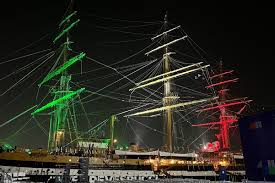C oinciding with the G20 summit in Brisbane, Asia’s two emerging economies, China and India are in the race for brokering deals to end stalemate in major multilateral fora. United States and China clinched a deal on emission cuts in greenhouse gas (GHG) emissions, ahead of the climate change conferences in Lima in December, this year and in Paris, next year.
oinciding with the G20 summit in Brisbane, Asia’s two emerging economies, China and India are in the race for brokering deals to end stalemate in major multilateral fora. United States and China clinched a deal on emission cuts in greenhouse gas (GHG) emissions, ahead of the climate change conferences in Lima in December, this year and in Paris, next year.
China also successfully pushed for a free trade area of Asia-Pacific in the recent summit of APEC leaders in Beijing as a parallel to the concept of Trans-Pacific Partnership floated by the United States.
Just ahead of the G20 summit in Brisbane, India and the US clinched a deal to end the deadlock in WTO over implementation of the Bali package. President Obama assured India’s Prime Minister Narendra Modi during his visit to the US in September to support India’s food security programme. Mr Obama agreed to support in the WTO for extension of Peace Clause so that India’s food subsidy would not be challenged by the member countries till a permanent solution is found on the subsidy issue. Banking upon Mr Obama’s assurance, Mr Modi agreed to movement in trade facilitation agreement for easing customs rules.
The issues relating to stalemate in negotiations on multilateral trade and climate change are likely to figure in the G20 summit where the world leaders are meeting to device strategies for bailing out the global economy from its current state of stagnation.
Behind US-China Deal
But who would win in the race for brokering deals? India or China. Or is US the principle gainer?
China, breaking away from the fold of developing countries, namely the BASIC group and G77 for which it was the leader, chose to align with US on climate talks. As per the deal, President Obama set the goal to cut US emissions between 26 and 28% by 2025 compared with 2009 levels. The US had earlier pledged to lower its emissions by 17% by 2020. Chinese President Xi Jinping pledged to achieve the “peaking of carbon dioxide emissions around 2030 and increase its share of non-fossil fuels in primary energy consumption to around 20% by 2030”. This is the first time China agreed to peak its carbon dioxide emissions. But the agreement only mentions “intent” and “intention,” falling short of real obligations.
The US-China deal is not likely to create conditions for containing the rise in global temperature within 2 degree Celsius. According to the projection made by the Centre for Science and Environment (CSE) per capita emissions of the US and China will converge at 12 tonne of carbon dioxide equivalent and therefore can spell disaster for the world.
China tops the list of world polluters with 29% of world’s total while US ranks second with 15%.
Both the US and China have got some escape route. The original base level for reducing emissions for industrialised countries was 1990 and not 2005 as per the deal. The shifting of the base level will help US to make few emission cuts. The European Union, which had earlier announced emission cut of 40% by 2030 relative to 1990 base year has, however, welcomed the move by US and China.
Why did China break away from the group of developing countries and align with US? China’s economy is growing fast and its emission level is rising. It has made a candid acknowledgement through this deal and has sought to peak its carbon dioxide emissions by 2030.
This seems to be smart politics by two greater polluters – US and China – to take leadership in climate talks. The US-China relations had nosedived with the US proclaiming its “pivot” policy for rebalancing in the Asia-Pacific region. The US plan for deploying troops in the region had not been liked by China. Now, the US and China have agreed to a military accord designed to avert clashes between Chinese and American planes and warships off the coast of China. The US agreed not to push for independence of Tibet or Taiwan. Both the US and China agreed for cuts in technology tariffs.
India’s Options
Now with the US, China and EU placing their offers on the table, it is now the turn for India. India, like other developing countries, is not mandated to make emission cuts under “common but differentiated responsibility”. However, it has voluntarily announced to reduce its carbon intensity – the amount of carbon emitted per unit of GDP – by 20 to 25% by year 2025. India has already assured that that its per capita emissions will not cross that in the industrialised world.
W ith China breaking away from the fold of the developing world India will have the hard task of defending the principle of CBDR, and urge for greater emission cuts in industrialised world.
ith China breaking away from the fold of the developing world India will have the hard task of defending the principle of CBDR, and urge for greater emission cuts in industrialised world.
The China-US deal on climate talks and the India-US pact on food security can only facilitate talks on climate change and keep multilateral talks going, but a permanent solution to the problems is not in sight.
The Bali agreement was unjust in bringing in issues of public stockholding and food security without discussing Agreement on Agriculture (AoA). The Marrakesh Agreement, leading to the setting up of the WTO, was heavily loaded in favour of the developed countries and has placed the developing world in a serious disadvantage, denying them a level playing field in a rule-based multilateral trade. Free and fair trade can be possible if the developed world phase out their high level of subsidies, remove protectionist barriers like high tariff regime, non-tariff and technical barriers and politically motivated sanitary and phyto-sanitary measures.
The extension of Peace Clause is just like a lolly pop. The real issue is ensuring free and fair trade and acknowledging the right of food security in developing countries as enshrined in the UN Millennium Development Goals.
(Ashok B. Sharma is a senior journalist and writes regularly on WTO-related related issues. This views expressed in this article are solely those of the author)
Author Profile
- India Writes Network (www.indiawrites.org) is an emerging think tank and a media-publishing company focused on international affairs & the India Story. Centre for Global India Insights is the research arm of India Writes Network. To subscribe to India and the World, write to editor@indiawrites.org. A venture of TGII Media Private Limited, a leading media, publishing and consultancy company, IWN has carved a niche for balanced and exhaustive reporting and analysis of international affairs. Eminent personalities, politicians, diplomats, authors, strategy gurus and news-makers have contributed to India Writes Network, as also “India and the World,” a magazine focused on global affairs.
Latest entries
 DiplomacyOctober 4, 2025UNGA Resolution 2758 Must Not Be Distorted, One-China Principle Brooks No Challenge
DiplomacyOctober 4, 2025UNGA Resolution 2758 Must Not Be Distorted, One-China Principle Brooks No Challenge India and the WorldJuly 26, 2025MPs, diplomats laud Operation Sindoor, call for national unity to combat Pakistan-sponsored terror
India and the WorldJuly 26, 2025MPs, diplomats laud Operation Sindoor, call for national unity to combat Pakistan-sponsored terror India and the WorldJuly 25, 2025When Fire Ends, Diplomacy Begins
India and the WorldJuly 25, 2025When Fire Ends, Diplomacy Begins India and the WorldJuly 16, 2025Operation Sindoor and its Aftermath: India’s Successful Diplomatic Outreach
India and the WorldJuly 16, 2025Operation Sindoor and its Aftermath: India’s Successful Diplomatic Outreach







